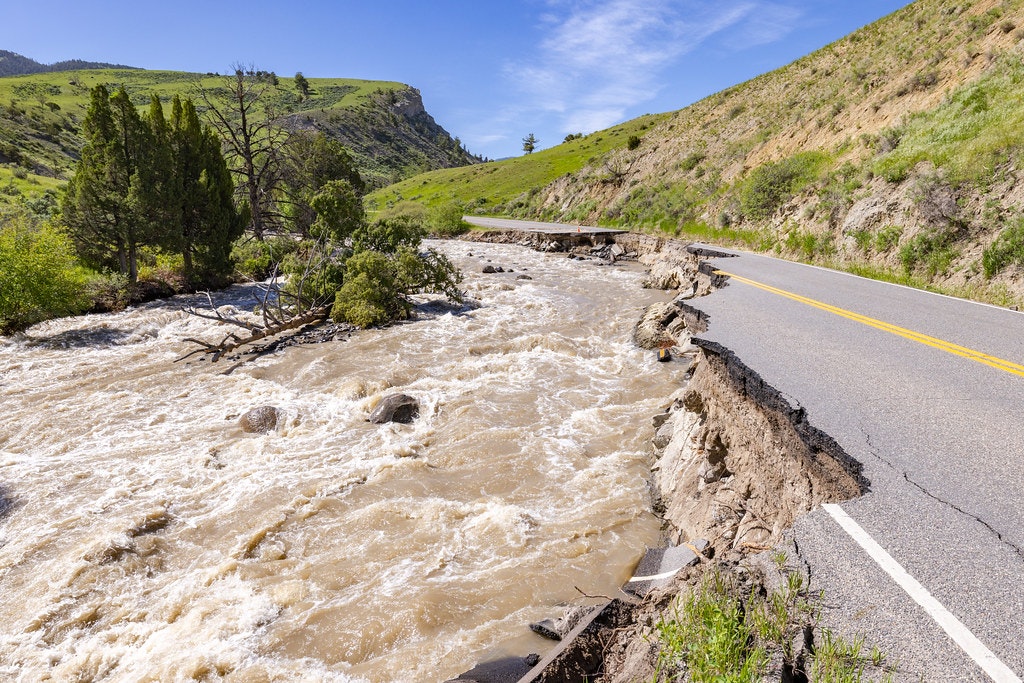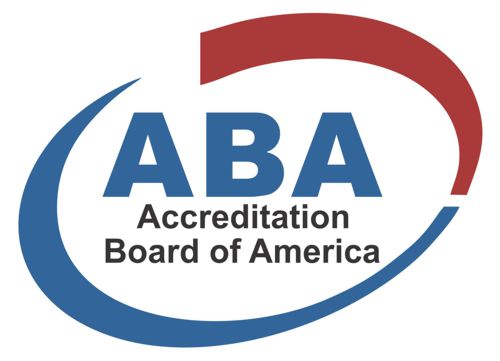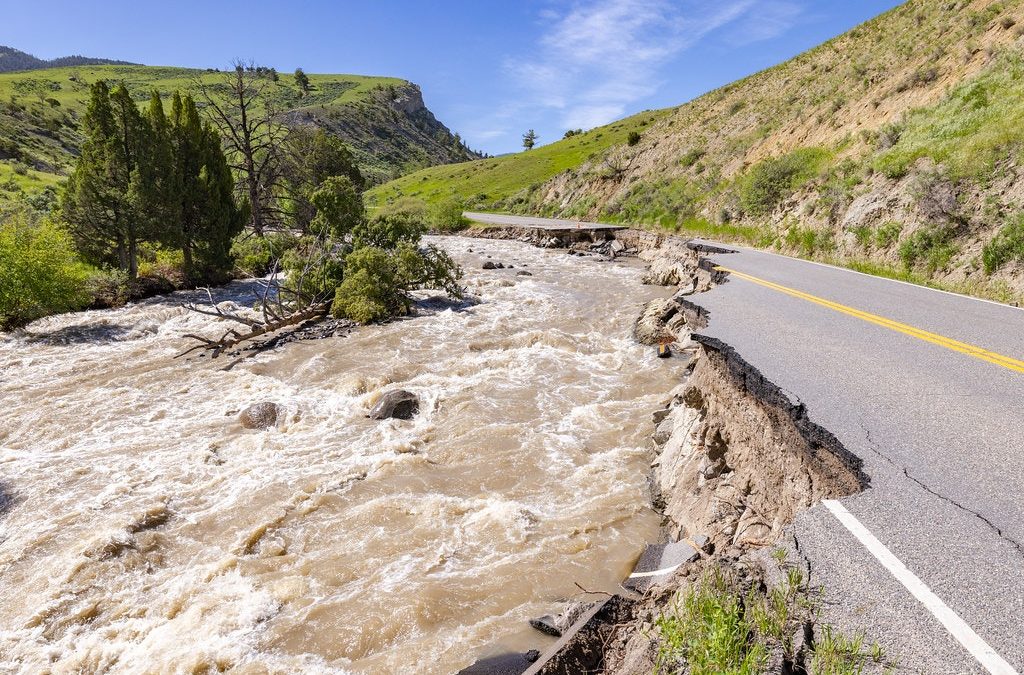
Editor’s note: News about conservation and the environment is made every day, but some of flies under the radar. In a recurring feature, Conservation News brings you one important story from the past week that you don’t want to miss.
This post was updated on June 23, 2022.
Last week, unprecedented floods ripped through Yellowstone National Park, shuttering it to visitors indefinitely, reported Jim Robbins, Thomas Fuller and Christine Chung for The New York Times. Record rainfall coupled with rising temperatures — which melted several inches of snow in the mountains — led to the torrent of water, which destroyed homes, ripped out bridges and altered the course of rivers across Yellowstone, the United States’ first national park.
This isn’t the first climate-related disaster to hit the United States’ national parks system: Wildfires burned thousands of giant sequoias in the Sierra National Forest in California in 2021; the icy structures that gave Glacier National Park in Montana its name are rapidly disappearing; and rising temperatures are even killing cactuses in Saguaro National Park in Arizona.
“Every single one of our more than 400 national parks are suffering,” Stephanie Kodish, director of the climate change program at the nonprofit National Parks Conservation Association, told The New York Times. “We are literally making a choice to wipe out these things that are gems of our world, that are gifts for us to pass down.”
While it is difficult to directly connect Yellowstone’s flooding with climate change, a 2018 study found that temperatures in U.S. national parks are rising at twice the rate of the country as a whole due to their location in higher elevations. Experts say that most parks like Yellowstone or other protected areas around the world do not have the infrastructure or funding to adapt to climate-fueled impacts such as flooding, fires and droughts.
And it’s not just climate change that’s putting the world’s protected areas at risk. COVID-related budget cuts have also taken a toll, weakening protections for natural areas on nearly every continent.
According to a 2021 study co-authored by Conservation International scientist Rachel Golden Kroner, many governments around the world shrunk, eliminated or diverted resources away from protected areas during the pandemic — some to drill for fossil fuels, others for urban development.
“As governments scramble to rebuild their economies, many countries are using the pandemic and economic crisis as an excuse to roll back environmental protections in certain areas so that they can be used for extractive and industrial development,” she said. “This is shortsighted — these decisions prioritize short-term profit over people and planet.”
For example, in eastern Brazil, a new bill could downsize the Chapada dos Veadeiros National Park by more than 240,000 hectares (593,000 acres) to enable large-scale agriculture. Shrinking protected areas in this way could harm both humans and wildlife.
With more than 8 billion visitors per year, protected areas around the world generate roughly US$ 850 billion annually — a critical source of revenue for surrounding communities. They are also crucial tools for wildlife conservation, providing habitats to sustain threatened species. A recent study found that mammal diversity within protected areas is 66 percent greater than in non-protected areas.
However, legal rollbacks of protections — known as protected area downgrading, downsizing and degazettement (PADDD) events — can accelerate deforestation, carbon emissions and habitat loss.
- Track PADDD events in your country here.
According to Golden Kroner, one key to ensuring that protected areas stay protected is adequate funding.
“Many protected areas and conserved lands have seen severe drops in funding and need emergency financial support from stimulus packages and sustained government financing,” she said.
“We will not be able to thrive on this planet unless countries stop harmful environmental rollbacks and instead strengthen nature conservation at a global scale for the long term.”
Read the article here.
Kiley Price is the staff writer and news editor at Conservation International. Want to read more stories like this? Sign up for email updates here. Donate to Conservation International here.
Cover image: Yellowstone flood event 2022: North Entrance Road washout (© NPS / Jacob W. Frank)
If you’d like to see the original source of this article please click here Visit Source

